Showing 131–140 of 192 results

This, an authorised reprint of an annual bulletin of the Indian Archaeological Society, has been offering valuable informations, full with rich insights and innovative viewpoints, on the Indian archaeology that includes excavations, inscriptions, temples, mosques, iconic symbols, paintings, etc. This yearly bulletin is highly recommended for archaeologists, epigraphists, historians and research scholars besides the general readers having interest in such fields.
Puratattva is the annual bulletin of one of the worlds most prestigious academic organization, the Indian Archaeological Society which was founded as early as 1967. From the very beginning, the Society has aimed at publishing the results of the latest archaeological discoveries made in India. Those who have contributed to the journal over the years include not only the eminent archaeologists excavating major sites, like Professors H.D. Sankalia, B.B. Lal, B.P. Sinha, Krishna Deva, A.K. Narain, G.R. Sharma, M.N. Deshpande, B.K. Thapar, S.R. Rao, B.M. Pande, J.P. Joshi, M.C. Joshi, M.S. Nagaraja Rao, A. Sundara, K.N. Dikshit, V.N. Misra, Vibha Tripathi, Rakesh Tiwari, V.S. Wakankar, Giriraj Kishore, K.V. Raman, N.C. Ghosh, K.M. Srivastava, M.A. Dhaky, V.D. Mishra, M.K. Dhavalikar, R.S. Bisht, B.R. Mani, R.C. Agarwal, S.P. Gupta, R.K. Verma, J.N. Pal, U.V. Shinde, Rakesh Tiwari, Alok Tripathi, Amarendra Nath, D.N. Tripathi, Ajith Prasad, K.S. Ramchandran, D.V. Sharma, but also young and budding scholars brimming with new ideas and equipped with new scientific techniques, exploring practically every part of the country and preparing their research works for their Doctoral and post-Doctoral degrees. Scholars from universities and research institutions like the Banaras Hindu University, Madras University, Nagarjuna University, Utkal University, Allahabad University, Patna University, Calcutta University, Mysore University, Baroda University, Kurukshetra University, Rohtak University, Lucknow University, Gorakhpur University, Deccan College, Indian Archaeological Society and the Archaeological Survey of India, the largest body of archeologists in India, to name a few, have been engaged in extensive and intensive field-work in the country. They have been regularly contributing their research-papers to this journal. The subjects covered by these scholars include Stone Age cultures, including Neolithic Culture and the Rock Art, Bronze Age Culture and the Rock Art, Bronze Age Culture of the Harappans found in the Indus and Saraswati basins, Chalcolithinc cultures found in the Deccan, Malwa, Maharashtra, Bengal, Bihar, Madhya Pradesh and Uttar Pradesh, and Early Iron Age cultures, including the Megalithic Culture, throughout India. They also include topics like Underwater Archaeology, Epigraphy, Numismatics, Art, Architecture, Conservation of Monuments, Antiquarian Laws and International Conventions. Puratattva also contains Notes and News, Book Reviews and dialogues between scholars on various issues. So far as many as 34 volumes have been published which provide a mine of information, without referring to which no worthwhile research-work on Indian history and archaeology is at all possible. The articles include even those presented in the Annual Conferences of the Society. This is precisely the reason the Puratattva is consulted throughout the world to gather details on the progress of Indian archaeology and insights on Indian history and culture. It is indeed of permanent value for all scholars and all libraries in India and abroad.
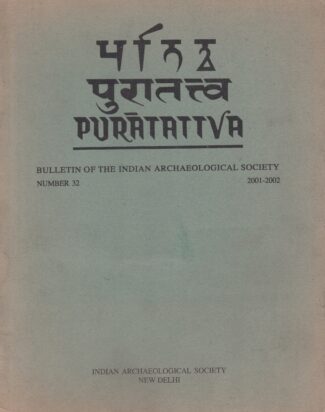
This, an authorised reprint of an annual bulletin of the Indian Archaeological Society, has been offering valuable informations, full with rich insights and innovative viewpoints, on the Indian archaeology that includes excavations, inscriptions, temples, mosques, iconic symbols, paintings, etc. This yearly bulletin is highly recommended for archaeologists, epigraphists, historians and research scholars besides the general readers having interest in such fields.
Puratattva is the annual bulletin of one of the worlds most prestigious academic organization, the Indian Archaeological Society which was founded as early as 1967. From the very beginning, the Society has aimed at publishing the results of the latest archaeological discoveries made in India. Those who have contributed to the journal over the years include not only the eminent archaeologists excavating major sites, like Professors H.D. Sankalia, B.B. Lal, B.P. Sinha, Krishna Deva, A.K. Narain, G.R. Sharma, M.N. Deshpande, B.K. Thapar, S.R. Rao, B.M. Pande, J.P. Joshi, M.C. Joshi, M.S. Nagaraja Rao, A. Sundara, K.N. Dikshit, V.N. Misra, Vibha Tripathi, Rakesh Tiwari, V.S. Wakankar, Giriraj Kishore, K.V. Raman, N.C. Ghosh, K.M. Srivastava, M.A. Dhaky, V.D. Mishra, M.K. Dhavalikar, R.S. Bisht, B.R. Mani, R.C. Agarwal, S.P. Gupta, R.K. Verma, J.N. Pal, U.V. Shinde, Rakesh Tiwari, Alok Tripathi, Amarendra Nath, D.N. Tripathi, Ajith Prasad, K.S. Ramchandran, D.V. Sharma, but also young and budding scholars brimming with new ideas and equipped with new scientific techniques, exploring practically every part of the country and preparing their research works for their Doctoral and post-Doctoral degrees. Scholars from universities and research institutions like the Banaras Hindu University, Madras University, Nagarjuna University, Utkal University, Allahabad University, Patna University, Calcutta University, Mysore University, Baroda University, Kurukshetra University, Rohtak University, Lucknow University, Gorakhpur University, Deccan College, Indian Archaeological Society and the Archaeological Survey of India, the largest body of archeologists in India, to name a few, have been engaged in extensive and intensive field-work in the country. They have been regularly contributing their research-papers to this journal. The subjects covered by these scholars include Stone Age cultures, including Neolithic Culture and the Rock Art, Bronze Age Culture and the Rock Art, Bronze Age Culture of the Harappans found in the Indus and Saraswati basins, Chalcolithinc cultures found in the Deccan, Malwa, Maharashtra, Bengal, Bihar, Madhya Pradesh and Uttar Pradesh, and Early Iron Age cultures, including the Megalithic Culture, throughout India. They also include topics like Underwater Archaeology, Epigraphy, Numismatics, Art, Architecture, Conservation of Monuments, Antiquarian Laws and International Conventions. Puratattva also contains Notes and News, Book Reviews and dialogues between scholars on various issues. So far as many as 34 volumes have been published which provide a mine of information, without referring to which no worthwhile research-work on Indian history and archaeology is at all possible. The articles include even those presented in the Annual Conferences of the Society. This is precisely the reason the Puratattva is consulted throughout the world to gather details on the progress of Indian archaeology and insights on Indian history and culture. It is indeed of permanent value for all scholars and all libraries in India and abroad.

This, an authorised reprint of an annual bulletin of the Indian Archaeological Society, has been offering valuable informations, full with rich insights and innovative viewpoints, on the Indian archaeology that includes excavations, inscriptions, temples, mosques, iconic symbols, paintings, etc. This yearly bulletin is highly recommended for archaeologists, epigraphists, historians and research scholars besides the general readers having interest in such fields.
Puratattva is the annual bulletin of one of the worlds most prestigious academic organization, the Indian Archaeological Society which was founded as early as 1967. From the very beginning, the Society has aimed at publishing the results of the latest archaeological discoveries made in India. Those who have contributed to the journal over the years include not only the eminent archaeologists excavating major sites, like Professors H.D. Sankalia, B.B. Lal, B.P. Sinha, Krishna Deva, A.K. Narain, G.R. Sharma, M.N. Deshpande, B.K. Thapar, S.R. Rao, B.M. Pande, J.P. Joshi, M.C. Joshi, M.S. Nagaraja Rao, A. Sundara, K.N. Dikshit, V.N. Misra, Vibha Tripathi, Rakesh Tiwari, V.S. Wakankar, Giriraj Kishore, K.V. Raman, N.C. Ghosh, K.M. Srivastava, M.A. Dhaky, V.D. Mishra, M.K. Dhavalikar, R.S. Bisht, B.R. Mani, R.C. Agarwal, S.P. Gupta, R.K. Verma, J.N. Pal, U.V. Shinde, Rakesh Tiwari, Alok Tripathi, Amarendra Nath, D.N. Tripathi, Ajith Prasad, K.S. Ramchandran, D.V. Sharma, but also young and budding scholars brimming with new ideas and equipped with new scientific techniques, exploring practically every part of the country and preparing their research works for their Doctoral and post-Doctoral degrees. Scholars from universities and research institutions like the Banaras Hindu University, Madras University, Nagarjuna University, Utkal University, Allahabad University, Patna University, Calcutta University, Mysore University, Baroda University, Kurukshetra University, Rohtak University, Lucknow University, Gorakhpur University, Deccan College, Indian Archaeological Society and the Archaeological Survey of India, the largest body of archeologists in India, to name a few, have been engaged in extensive and intensive field-work in the country. They have been regularly contributing their research-papers to this journal. The subjects covered by these scholars include Stone Age cultures, including Neolithic Culture and the Rock Art, Bronze Age Culture and the Rock Art, Bronze Age Culture of the Harappans found in the Indus and Saraswati basins, Chalcolithinc cultures found in the Deccan, Malwa, Maharashtra, Bengal, Bihar, Madhya Pradesh and Uttar Pradesh, and Early Iron Age cultures, including the Megalithic Culture, throughout India. They also include topics like Underwater Archaeology, Epigraphy, Numismatics, Art, Architecture, Conservation of Monuments, Antiquarian Laws and International Conventions. Puratattva also contains Notes and News, Book Reviews and dialogues between scholars on various issues. So far as many as 34 volumes have been published which provide a mine of information, without referring to which no worthwhile research-work on Indian history and archaeology is at all possible. The articles include even those presented in the Annual Conferences of the Society. This is precisely the reason the Puratattva is consulted throughout the world to gather details on the progress of Indian archaeology and insights on Indian history and culture. It is indeed of permanent value for all scholars and all libraries in India and abroad.

This, an authorised reprint of an annual bulletin of the Indian Archaeological Society, has been offering valuable informations, full with rich insights and innovative viewpoints, on the Indian archaeology that includes excavations, inscriptions, temples, mosques, iconic symbols, paintings, etc. This yearly bulletin is highly recommended for archaeologists, epigraphists, historians and research scholars besides the general readers having interest in such fields.
Puratattva is the annual bulletin of one of the worlds most prestigious academic organization, the Indian Archaeological Society which was founded as early as 1967. From the very beginning, the Society has aimed at publishing the results of the latest archaeological discoveries made in India. Those who have contributed to the journal over the years include not only the eminent archaeologists excavating major sites, like Professors H.D. Sankalia, B.B. Lal, B.P. Sinha, Krishna Deva, A.K. Narain, G.R. Sharma, M.N. Deshpande, B.K. Thapar, S.R. Rao, B.M. Pande, J.P. Joshi, M.C. Joshi, M.S. Nagaraja Rao, A. Sundara, K.N. Dikshit, V.N. Misra, Vibha Tripathi, Rakesh Tiwari, V.S. Wakankar, Giriraj Kishore, K.V. Raman, N.C. Ghosh, K.M. Srivastava, M.A. Dhaky, V.D. Mishra, M.K. Dhavalikar, R.S. Bisht, B.R. Mani, R.C. Agarwal, S.P. Gupta, R.K. Verma, J.N. Pal, U.V. Shinde, Rakesh Tiwari, Alok Tripathi, Amarendra Nath, D.N. Tripathi, Ajith Prasad, K.S. Ramchandran, D.V. Sharma, but also young and budding scholars brimming with new ideas and equipped with new scientific techniques, exploring practically every part of the country and preparing their research works for their Doctoral and post-Doctoral degrees. Scholars from universities and research institutions like the Banaras Hindu University, Madras University, Nagarjuna University, Utkal University, Allahabad University, Patna University, Calcutta University, Mysore University, Baroda University, Kurukshetra University, Rohtak University, Lucknow University, Gorakhpur University, Deccan College, Indian Archaeological Society and the Archaeological Survey of India, the largest body of archeologists in India, to name a few, have been engaged in extensive and intensive field-work in the country. They have been regularly contributing their research-papers to this journal. The subjects covered by these scholars include Stone Age cultures, including Neolithic Culture and the Rock Art, Bronze Age Culture and the Rock Art, Bronze Age Culture of the Harappans found in the Indus and Saraswati basins, Chalcolithinc cultures found in the Deccan, Malwa, Maharashtra, Bengal, Bihar, Madhya Pradesh and Uttar Pradesh, and Early Iron Age cultures, including the Megalithic Culture, throughout India. They also include topics like Underwater Archaeology, Epigraphy, Numismatics, Art, Architecture, Conservation of Monuments, Antiquarian Laws and International Conventions. Puratattva also contains Notes and News, Book Reviews and dialogues between scholars on various issues. So far as many as 34 volumes have been published which provide a mine of information, without referring to which no worthwhile research-work on Indian history and archaeology is at all possible. The articles include even those presented in the Annual Conferences of the Society. This is precisely the reason the Puratattva is consulted throughout the world to gather details on the progress of Indian archaeology and insights on Indian history and culture. It is indeed of permanent value for all scholars and all libraries in India and abroad.
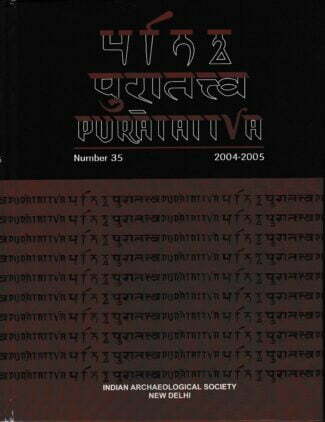
This, an authorised reprint of an annual bulletin of the Indian Archaeological Society, has been offering valuable informations, full with rich insights and innovative viewpoints, on the Indian archaeology that includes excavations, inscriptions, temples, mosques, iconic symbols, paintings, etc. This yearly bulletin is highly recommended for archaeologists, epigraphists, historians and research scholars besides the general readers having interest in such fields.
Puratattva is the annual bulletin of one of the worlds most prestigious academic organization, the Indian Archaeological Society which was founded as early as 1967. From the very beginning, the Society has aimed at publishing the results of the latest archaeological discoveries made in India. Those who have contributed to the journal over the years include not only the eminent archaeologists excavating major sites, like Professors H.D. Sankalia, B.B. Lal, B.P. Sinha, Krishna Deva, A.K. Narain, G.R. Sharma, M.N. Deshpande, B.K. Thapar, S.R. Rao, B.M. Pande, J.P. Joshi, M.C. Joshi, M.S. Nagaraja Rao, A. Sundara, K.N. Dikshit, V.N. Misra, Vibha Tripathi, Rakesh Tiwari, V.S. Wakankar, Giriraj Kishore, K.V. Raman, N.C. Ghosh, K.M. Srivastava, M.A. Dhaky, V.D. Mishra, M.K. Dhavalikar, R.S. Bisht, B.R. Mani, R.C. Agarwal, S.P. Gupta, R.K. Verma, J.N. Pal, U.V. Shinde, Rakesh Tiwari, Alok Tripathi, Amarendra Nath, D.N. Tripathi, Ajith Prasad, K.S. Ramchandran, D.V. Sharma, but also young and budding scholars brimming with new ideas and equipped with new scientific techniques, exploring practically every part of the country and preparing their research works for their Doctoral and post-Doctoral degrees. Scholars from universities and research institutions like the Banaras Hindu University, Madras University, Nagarjuna University, Utkal University, Allahabad University, Patna University, Calcutta University, Mysore University, Baroda University, Kurukshetra University, Rohtak University, Lucknow University, Gorakhpur University, Deccan College, Indian Archaeological Society and the Archaeological Survey of India, the largest body of archeologists in India, to name a few, have been engaged in extensive and intensive field-work in the country. They have been regularly contributing their research-papers to this journal. The subjects covered by these scholars include Stone Age cultures, including Neolithic Culture and the Rock Art, Bronze Age Culture and the Rock Art, Bronze Age Culture of the Harappans found in the Indus and Saraswati basins, Chalcolithinc cultures found in the Deccan, Malwa, Maharashtra, Bengal, Bihar, Madhya Pradesh and Uttar Pradesh, and Early Iron Age cultures, including the Megalithic Culture, throughout India. They also include topics like Underwater Archaeology, Epigraphy, Numismatics, Art, Architecture, Conservation of Monuments, Antiquarian Laws and International Conventions. Puratattva also contains Notes and News, Book Reviews and dialogues between scholars on various issues. So far as many as 34 volumes have been published which provide a mine of information, without referring to which no worthwhile research-work on Indian history and archaeology is at all possible. The articles include even those presented in the Annual Conferences of the Society. This is precisely the reason the Puratattva is consulted throughout the world to gather details on the progress of Indian archaeology and insights on Indian history and culture. It is indeed of permanent value for all scholars and all libraries in India and abroad.
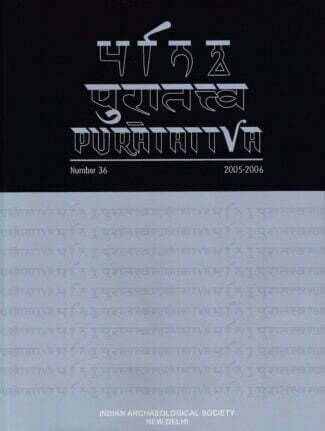
This, an authorised reprint of an annual bulletin of the Indian Archaeological Society, has been offering valuable informations, full with rich insights and innovative viewpoints, on the Indian archaeology that includes excavations, inscriptions, temples, mosques, iconic symbols, paintings, etc. This yearly bulletin is highly recommended for archaeologists, epigraphists, historians and research scholars besides the general readers having interest in such fields.
Puratattva is the annual bulletin of one of the worlds most prestigious academic organization, the Indian Archaeological Society which was founded as early as 1967. From the very beginning, the Society has aimed at publishing the results of the latest archaeological discoveries made in India. Those who have contributed to the journal over the years include not only the eminent archaeologists excavating major sites, like Professors H.D. Sankalia, B.B. Lal, B.P. Sinha, Krishna Deva, A.K. Narain, G.R. Sharma, M.N. Deshpande, B.K. Thapar, S.R. Rao, B.M. Pande, J.P. Joshi, M.C. Joshi, M.S. Nagaraja Rao, A. Sundara, K.N. Dikshit, V.N. Misra, Vibha Tripathi, Rakesh Tiwari, V.S. Wakankar, Giriraj Kishore, K.V. Raman, N.C. Ghosh, K.M. Srivastava, M.A. Dhaky, V.D. Mishra, M.K. Dhavalikar, R.S. Bisht, B.R. Mani, R.C. Agarwal, S.P. Gupta, R.K. Verma, J.N. Pal, U.V. Shinde, Rakesh Tiwari, Alok Tripathi, Amarendra Nath, D.N. Tripathi, Ajith Prasad, K.S. Ramchandran, D.V. Sharma, but also young and budding scholars brimming with new ideas and equipped with new scientific techniques, exploring practically every part of the country and preparing their research works for their Doctoral and post-Doctoral degrees. Scholars from universities and research institutions like the Banaras Hindu University, Madras University, Nagarjuna University, Utkal University, Allahabad University, Patna University, Calcutta University, Mysore University, Baroda University, Kurukshetra University, Rohtak University, Lucknow University, Gorakhpur University, Deccan College, Indian Archaeological Society and the Archaeological Survey of India, the largest body of archeologists in India, to name a few, have been engaged in extensive and intensive field-work in the country. They have been regularly contributing their research-papers to this journal. The subjects covered by these scholars include Stone Age cultures, including Neolithic Culture and the Rock Art, Bronze Age Culture and the Rock Art, Bronze Age Culture of the Harappans found in the Indus and Saraswati basins, Chalcolithinc cultures found in the Deccan, Malwa, Maharashtra, Bengal, Bihar, Madhya Pradesh and Uttar Pradesh, and Early Iron Age cultures, including the Megalithic Culture, throughout India. They also include topics like Underwater Archaeology, Epigraphy, Numismatics, Art, Architecture, Conservation of Monuments, Antiquarian Laws and International Conventions. Puratattva also contains Notes and News, Book Reviews and dialogues between scholars on various issues. So far as many as 34 volumes have been published which provide a mine of information, without referring to which no worthwhile research-work on Indian history and archaeology is at all possible. The articles include even those presented in the Annual Conferences of the Society. This is precisely the reason the Puratattva is consulted throughout the world to gather details on the progress of Indian archaeology and insights on Indian history and culture. It is indeed of permanent value for all scholars and all libraries in India and abroad.

This, an authorised reprint of an annual bulletin of the Indian Archaeological Society, has been offering valuable informations, full with rich insights and innovative viewpoints, on the Indian archaeology that includes excavations, inscriptions, temples, mosques, iconic symbols, paintings, etc. This yearly bulletin is highly recommended for archaeologists, epigraphists, historians and research scholars besides the general readers having interest in such fields.
An annual bulletin of the Indian Archaeological Society, has been offering for the last 33 years valuable informations, full with rich insights and innovative viewpoints, on the Indian archaeology that includes excavations, inscriptions, temples, mosques, iconic symbols, paintings, etc. This yearly bulletinis highly recommended for archaeologists, epigraphists, historians and research scholars besides the general readers having interest in such fields.
For detailed information please see Volume 1.

This, an authorised reprint of an annual bulletin of the Indian Archaeological Society, has been offering valuable informations, full with rich insights and innovative viewpoints, on the Indian archaeology that includes excavations, inscriptions, temples, mosques, iconic symbols, paintings, etc. This yearly bulletin is highly recommended for archaeologists, epigraphists, historians and research scholars besides the general readers having interest in such fields.
An annual bulletin of the Indian Archaeological Society, has been offering for the last 33 years valuable informations, full with rich insights and innovative viewpoints, on the Indian archaeology that includes excavations, inscriptions, temples, mosques, iconic symbols, paintings, etc. This yearly bulletinis highly recommended for archaeologists, epigraphists, historians and research scholars besides the general readers having interest in such fields.
For detailed information please see Volume 1.
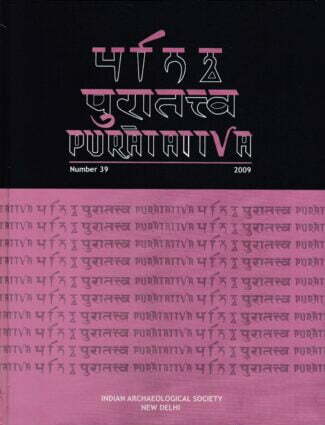
This, an authorised reprint of an annual bulletin of the Indian Archaeological Society, has been offering valuable informations, full with rich insights and innovative viewpoints, on the Indian archaeology that includes excavations, inscriptions, temples, mosques, iconic symbols, paintings, etc. This yearly bulletin is highly recommended for archaeologists, epigraphists, historians and research scholars besides the general readers having interest in such fields.
An annual bulletin of the Indian Archaeological Society, has been offering for the last 33 years valuable informations, full with rich insights and innovative viewpoints, on the Indian archaeology that includes excavations, inscriptions, temples, mosques, iconic symbols, paintings, etc. This yearly bulletinis highly recommended for archaeologists, epigraphists, historians and research scholars besides the general readers having interest in such fields.
For detailed information please see Volume 1.
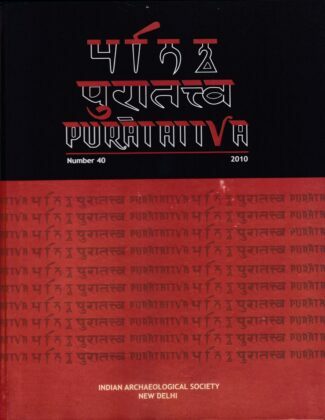
This, an authorised reprint of an annual bulletin of the Indian Archaeological Society, has been offering valuable informations, full with rich insights and innovative viewpoints, on the Indian archaeology that includes excavations, inscriptions, temples, mosques, iconic symbols, paintings, etc. This yearly bulletin is highly recommended for archaeologists, epigraphists, historians and research scholars besides the general readers having interest in such fields.
An annual bulletin of the Indian Archaeological Society, has been offering for the last 33 years valuable informations, full with rich insights and innovative viewpoints, on the Indian archaeology that includes excavations, inscriptions, temples, mosques, iconic symbols, paintings, etc. This yearly bulletinis highly recommended for archaeologists, epigraphists, historians and research scholars besides the general readers having interest in such fields.
For detailed information please see Volume 1.
| There are no products |